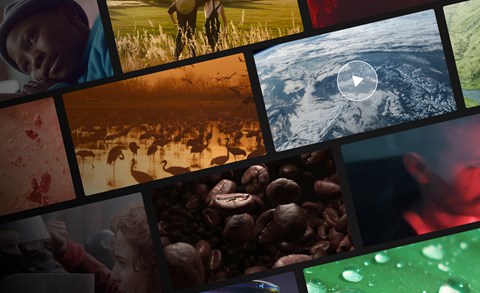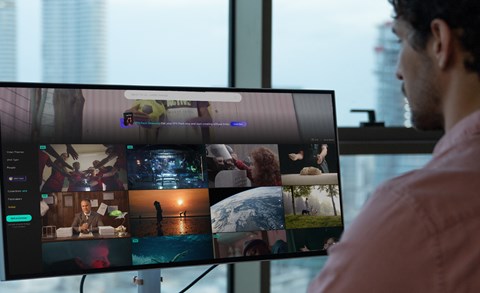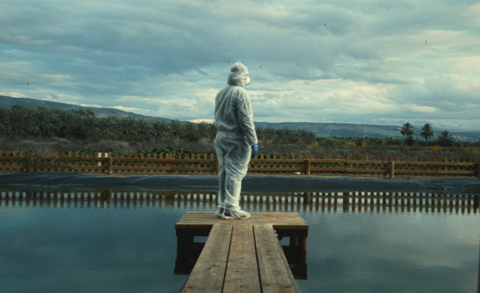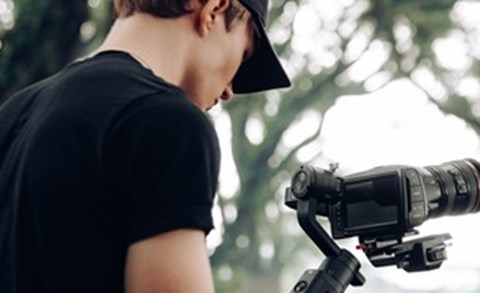In just a few years, stock footage has gone from being a niche used predominantly by the film and TV industry to a widely available tool for filmmakers of all levels, hobbyists, YouTubers and just about anybody that works with video. The significant rise in video editing apps with a selection of library stock footage has seen a massive increase in the quality of stock clips and other stock elements.
Websites like Artgrid are changing how we look at this powerful tool with collections of clips that run together, the ability to search footage by theme, shot type, people and a designated section for filmmakers. If you've never used stock footage before or aren't sure what it is, let's just take a moment to explain what stock footage is before discussing how to use it in your project.
Part 1: What is stock footage?
Stock footage is essentially a video clip for which you can purchase a license to use. There are millions of stock footage clips available for editors, with everything from abstract business architecture to alien ships floating through space; with stock footage, it’s not hard to find what you are looking for. While there are many things to keep in mind when selecting suitable stock footage, the 2 most frequent things to consider are the type of clip and the type of license.
What formats of stock footage are available?
Stock footage can come in various formats, including Raw, 4K-8K, ProRes, HD and H.264. Working with these different formats may result in some software issues depending on your hardware. For example, 8K footage can be brutal for some graphics cards to render and take up much more space on your hard drive. It is crucial that you consider the formats you will be working with and how they will work together.
Types of license
Licensing can be pretty complicated; traditionally, you would pay for a footage license that would include specifications on how long you could use the clip for and for what media. With these types of licenses, you should read the fine print on a case-by-case basis.
Why choose royalty-free video clips?
Sites like Artgrid provide royalty-free video clips with a subscription-based model, a considerable advantage over traditional or Creative Commons licensing, which is free video footage for editing. The benefits of stock clips for editors are quality, ease of use and flexibility (more on that later), among others. In addition, the monthly subscription gives you access to as many downloads as you like, with a lifetime license for any clip you might use.
Part 2: Why use stock footage in your video?
There are several scenarios that every filmmaker will likely come up against where stock footage may be the answer. Of course, you can use stock footage for whatever you like (that’s the point of it), but here's a selection of the top reasons you might be using Stock assets.
Impossible to film
You may well need stock footage to fill in gaps that, quite simply, it would be impossible to film yourself. If you need a shot of an astronaut, you’re unlikely to be able to fire your cast and crew into space, but stock footage can help.
Stock footage can also be mixed with your own Green Screen Clips, allowing you to place your performers into stock scenes; this can be super helpful if you’re creating a genre narrative and need cool-looking production effects.
Save on your budget
Sometimes a shot might be perfectly possible to film, but doing so might be out of your budget. Stock footage can be a cost-effective way of filling in some of the more expensive shots in your production.
A great example is establishing shots, which can take your audience to a specific time or location, entirely separate from where your film was shot. Stock footage can also help with those difficult to get into areas, such as train stations, airports and other unique places.
Great for B Roll
When creating business promotions and slideshows, you will usually follow a familiar format and structure; talking head interviews cut together with B Roll. Despite being some of the most manageable footage to shoot, B Roll can be pretty challenging to get from a logistics standpoint. Stock footage is a great alternative to purpose-shot B Roll, and there are plenty of options for a range of business types.
Flexibility
One of the key differences in using stock footage is that it is often added later. While it is recommended to try and plan your shoot knowing the stock footage you want to use, the very nature of these assets allows you to pick and choose your shots during the edit.
The flexibility of stock footage can allow you to change elements of your video at the latest possible point, without costly reshoots; ideal for indecisive clients.
Motion backgrounds
Stock footage can be used for much more than video content. There are many other areas of your business or brand to improve engagement with a video clip. Stock video can be used for stylish video headers on websites, Slideshow presentation backgrounds and even a professional-looking screensaver.
Part 3: Top tips for using stock footage
As with all Editing, there is no right or wrong way to produce the desired outcome, but there are some top tips that you can consider when using stock footage to make the most of your assets.
Tell a story
The key to using stock footage well is to create a narrative with your shots. It can be tricky to create narrative stories from individual clips, but Artgrid provides royalty-free stock footage in collections to give you a range of video clips for editing around a single subject. Your narrative doesn’t need to be in-depth or complex; placing 3 to 4 shots in a sequence can help create an engaging story.
Matching shooting styles
One thing that can make stock footage stand out, and not in a good way, is an apparent difference between the cameras and shooting styles. You can’t control what camera the filmmaker used to record the footage or any camera movement in the scene, but you can make these factors a part of your search criteria.
Reframing your shot
Sometimes the stock clips you find are not quite perfect for your scene and might require a bit of editing. However, you can use all the same techniques and tools you would with the footage you shoot yourself, so you can scale up, crop, flip, reposition and rotate your clips as needed. At Artgrid, you can see in advance how your stock clip will look at the square and vertical format using the Aspect Ratio tool.
Grading and effects
Grading and Effects can play a huge role in connecting your sequence and making your clips feel connected. Grading your footage or adding specialized color effects is a great place to start, but you can further apply overlay effects like noise and grain or light leaks to your scene. Artgrid provides RAW and LOG footage, formats that give you the highest flexibility for color grading. In addition, you can check out our article about common color grading mistakes beginners make.
Wrap up
There is no doubt that stock footage can be a time and money-saving tool, but it can also help you achieve higher production values and creativity beyond your skill-set. If you're just starting editing, using stock footage can be a brilliant way to begin understanding the basics. When you plan your projects, consider what elements you might use from stock footage and see how they can improve your production.






